windows server 2003用啥无线网卡驱动?还是只能用有线的网卡驱动吗
Posted
tags:
篇首语:本文由小常识网(cha138.com)小编为大家整理,主要介绍了windows server 2003用啥无线网卡驱动?还是只能用有线的网卡驱动吗相关的知识,希望对你有一定的参考价值。
我的笔记本装xp和server 2003双系统,在xp(能联网)下用360检测无线的网卡驱动是装了realtek rtl8187se什么什么的,然后到百度下了这驱动,换server 2003启动,安装的时候提示do not support this operator system,然后我又换xp启动,在瑞昱的官网下了这款驱动,换server 2003 启动,也是同样的提示。然后我在server2003装了驱动精灵,在里面下了这款驱动,然后同样的提示.....
是不是windows server 2003只能插网线,不能连wifi,那款无线的网卡驱动不支持,有线的那款未试过。我主要就是想装来和一台台式机组成一个小的局域网,用server 2003,来练习下,毕竟考网络工程师需要。
希望大神说说server2003的笔记本应该怎么联网
我就是在能联网的xp下检测了下我正在用的是什么网卡驱动,然后下好了安装包,重启,用windows server 2003启动,打开这个安装包就说do not support this operator system
参考技术A 建议你下载安装个驱动人生,下载、更新电脑驱动用这个最靠谱了Upgrade Windows Server 2016 to Windows Server 2019
Pre-Upgrade
Upgrade path:
Windows Server 2016 can be upgraded to Windows 2019 in a single upgrade process.
Support:
In-place Upgrade is supported for Windows Server 2016 on physicaL hardware, and in Virtual Machines. Public and private cloud companies also support In-place Upgrade on Windows Server 2016 Virtual Machines to upgrade to Windows Server 2019 – check with your cloud provider.
Alternative:
Migrate (re-deploy) applications and data on a clean install of Windows Server 2019.
Limitations:
- For the smoothest upgrade experience, if you‘ve deployed software-defined datacenter (SDDC) features like Software-Defined Networking (SDN) or Storage Spaces Direct, you are encouraged to wait for validated hardware from the Windows Server Software-Defined (WSSD) program to become available. The first wave of validated hardware is expected very soon; in mid-January 2019. Until then, please evaluate Windows Server 2019 using the Windows Insider edition, or call Microsoft support for recommendations on how to proceed.
- Windows Servers configured to “Boot from VHD” cannot be upgraded using In-place Upgrade.
Planning for In-place Upgrade
Before proceeding with In-place Upgrade, collect the following information:
-
Is there a target or goal timeframe for upgrading this server?
-
Is this a production-critical server?
-
Is there a maintenance window for upgrading this server?
-
Is there enough time for a test upgrade on an identical or similar non-production server?
-
Who uses this server? Internal users, external users, or both? Have they been informed of the upgrade or maintenance?
-
Is there an inventory of what is running on the server? Check the following:
-
Windows Server Roles and Features
-
Microsoft applications: SQL Server, SharePoint Server, Exchange Server, etc.
-
3rd-Party applications: SAP, Oracle, DB2, etc.
-
Is the server joined to an Active Directory domain?
-
Are any of the server disks BitLocker protected?
-
Is the server part of a Failover Cluster?
Note that Cluster OS Rolling Upgrade can be used to upgrade Windows Server 2016 Failover Clusters to Windows Server 2019.
-
-
How often is the server backed-up? Have backups ever been successfully restored (applied) to the server or applications?
-
What backup software is used?
-
If In-place Upgrade is not successful and the server needs to be rebuilt, are the Windows Server and application install media available?
Although it is rare, In-place Upgrade can fail and there should be a plan in-place for this possibility, to minimize server downtime and maintain SLAs.
-
Is the server fully patched? It is strongly recommended that the server is fully patched prior to In-place Upgrade.
-
Run systeminfo.exe and save the output:
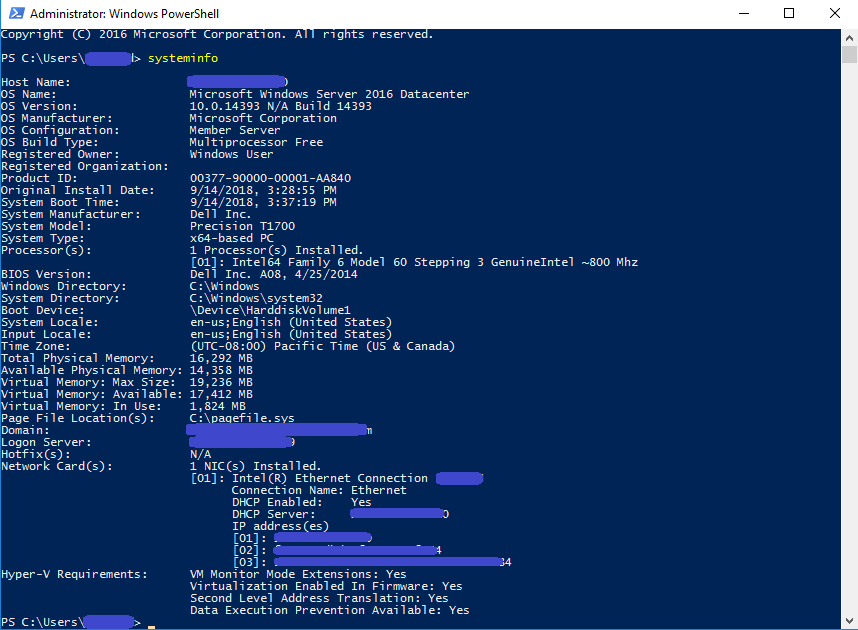
-
Run ipconfig /all and save the output:
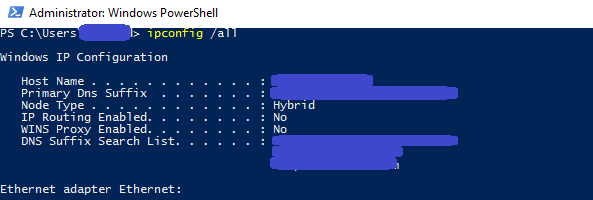
-
Run Get-WindowsFeature and save the output:

-
Run RegEdit and capture the value of the the HKEY_LOCAL_MACHINESOFTWAREMicrosoftWindowsNTCurrentVersion hive – this will show the exact version (BuildLabEx) and edition (EditionID) of Windows Server:
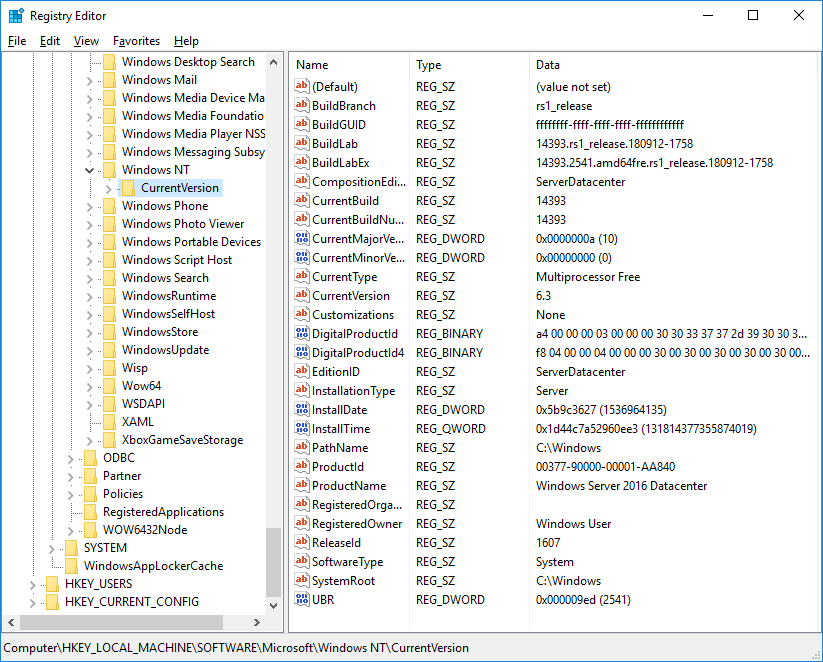
Before proceeding with the In-place Upgrade
-
Backup the Operating System, Applications, and Virtual Machines.
-
Shutdown, Quick Migrate, or Live Migrate all Virtual Machines running on the server - Virtual Machines cannot be running on the server during In-place Upgrade.
Upgrade
-
Locate the setup media for Windows Server 2019
-
Run setup.exe by double-clicking it:
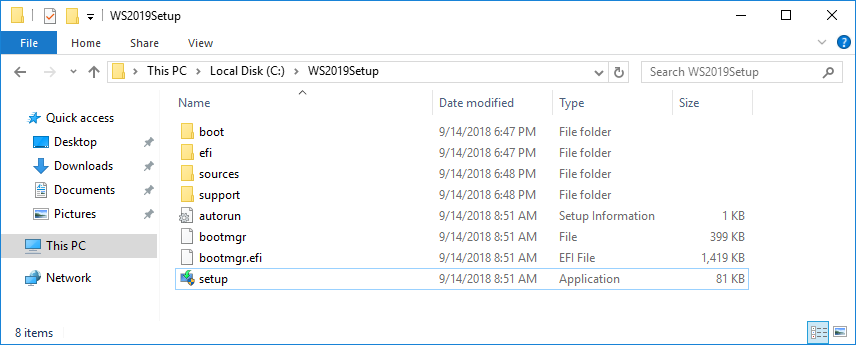
-
Click Yes to enable setup to proceed:
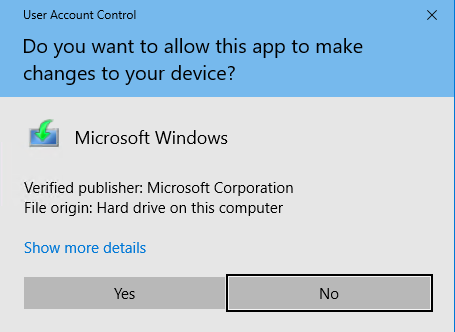
-
For internet-connected devices, we recommend the Download updates, drivers and optional features option. Click Next:
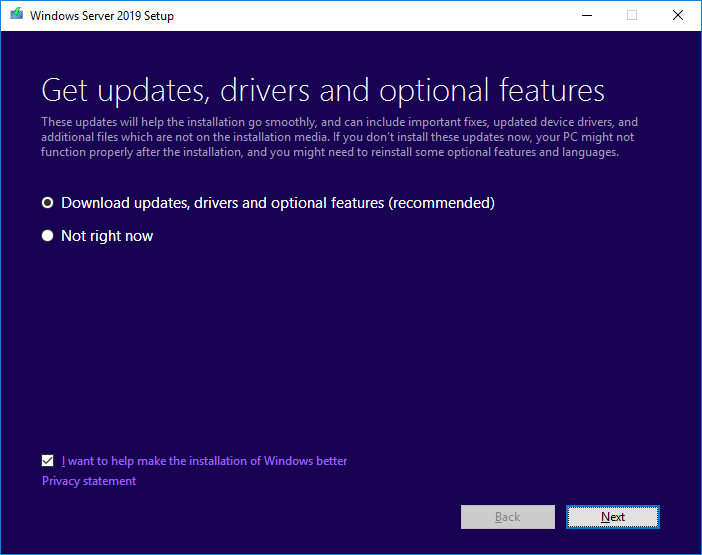
-
Setup will check the configuration of your computer – please wait:
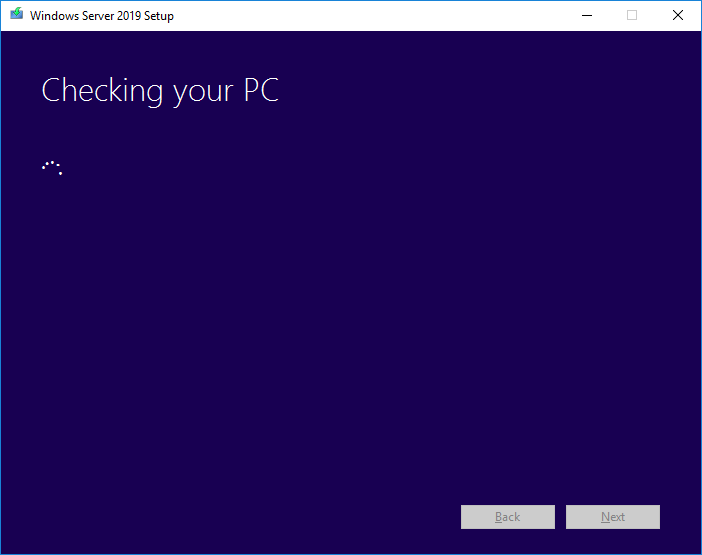
-
Depending on the distribution channel that you received Windows Server media from (Retail, Volume License, OEM, ODM, etc.) and the license for the server, you may be prompted to enter a licensing key to proceed.
-
You will be prompted to select the image of the Edition to upgrade to. Then click Next:
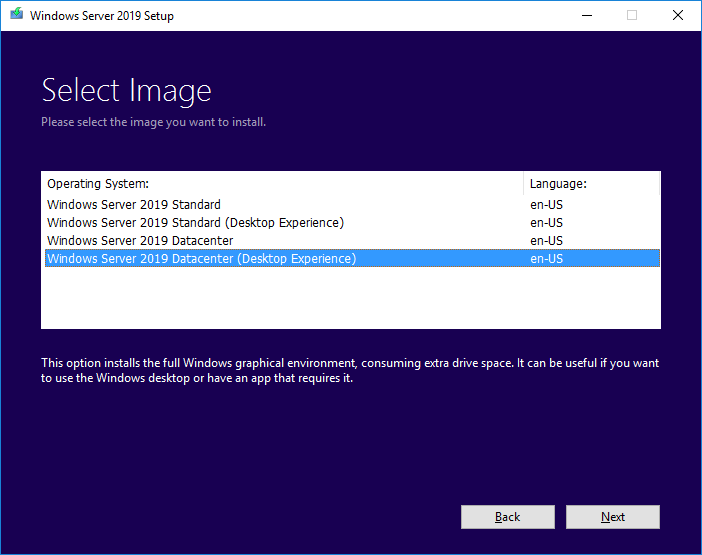
-
Depending on the distribution channel that you received Windows Server media from (Retail, Volume License, OEM, ODM, etc.) you may be presented with different license agreements. Click Accept:
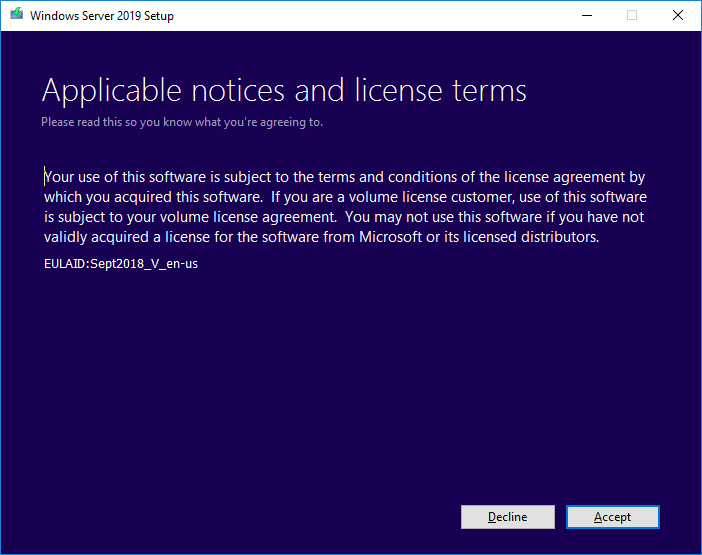
-
For In-place Upgrade, select Keep personal files and apps, and then click Next:
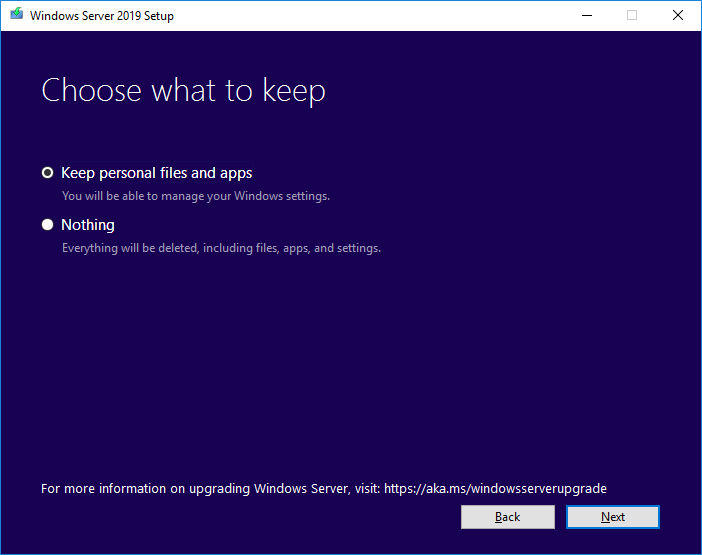
-
When the analysis phase is complete, setup will prompt you to click Back to change choices, or to proceed with the In-place Upgrade. Click Install:
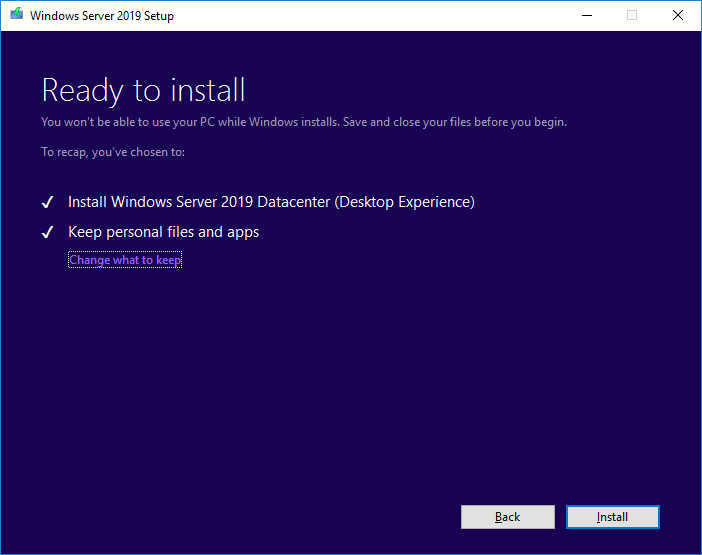
-
Setup will proceed with the In-place Upgrade, and then the server will reboot:
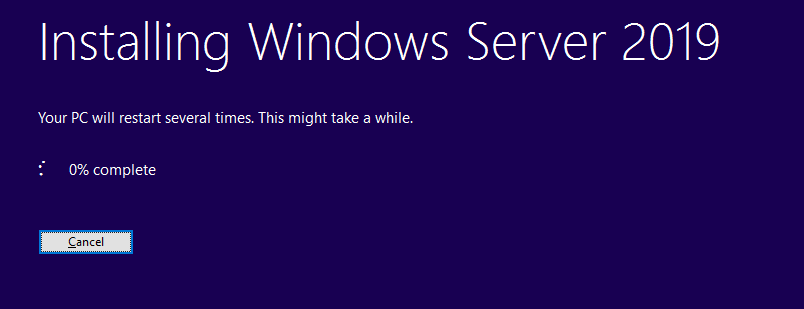
- Setup will complete and the server will reboot.
Post-upgrade
-
After Setup has completed installing and rebooted the sever, login to check that the server has been successfully upgraded. If you selected Windows Server 2019 Standard or Datacenter Desktop Edition, you should see the Server Manager window:
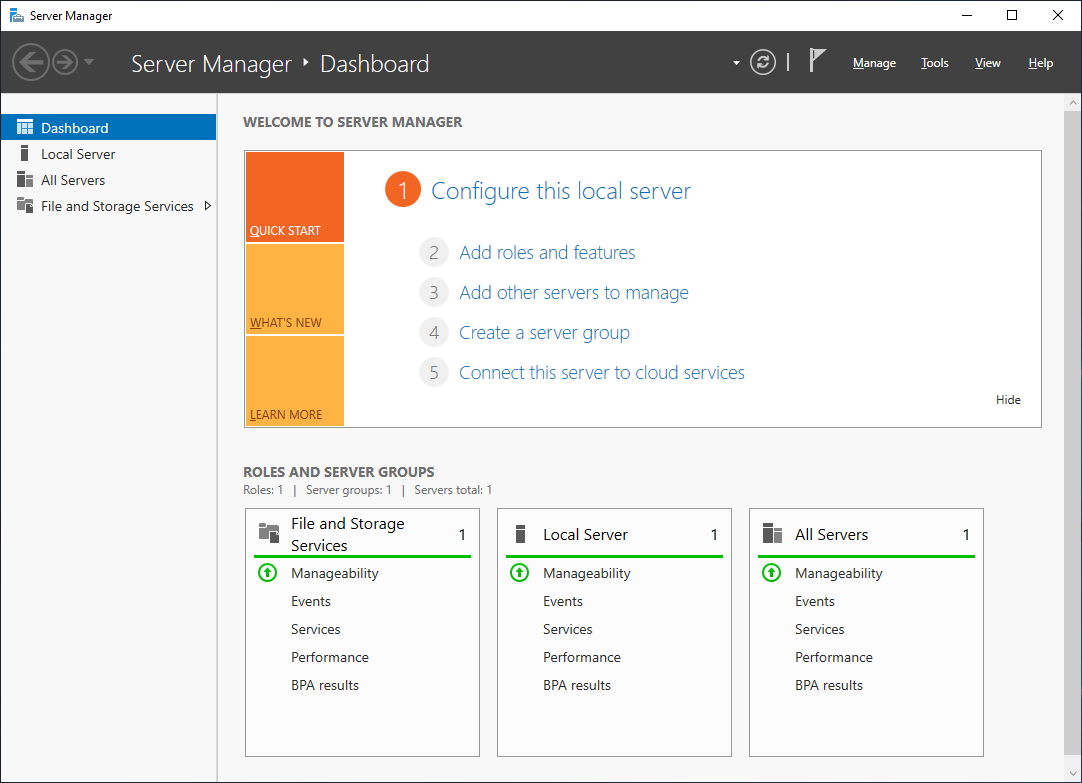
-
Run RegEdit and check the value of the HKEY_LOCAL_MACHINESOFTWAREMicrosoftWindowsNTCurrentVersion hive – the version should be successfully updated to Windows Server 2019.
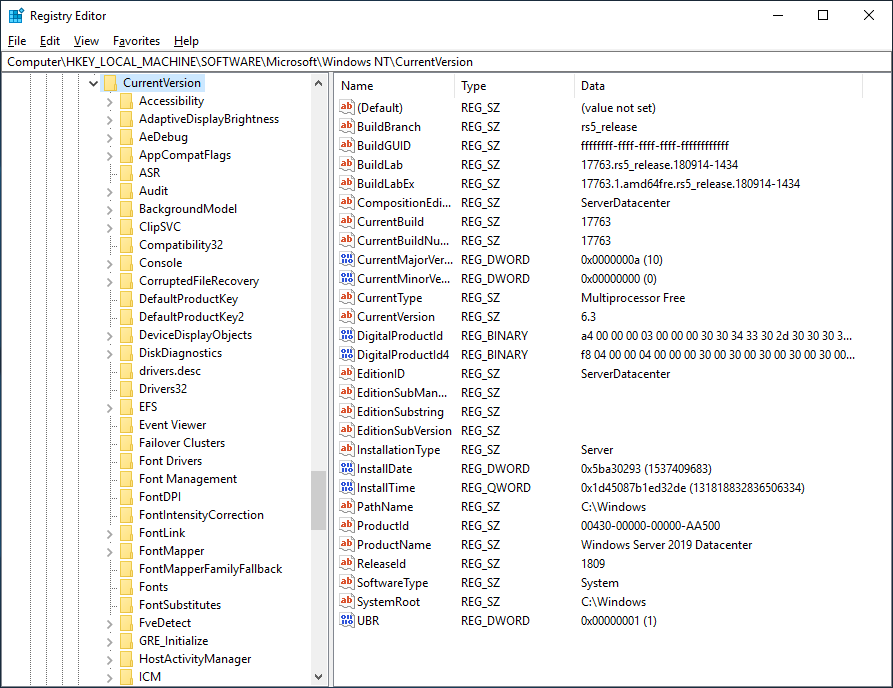
-
Check that applications are running and that client connections to the applications succeed.
-
If you believe that there has been an issue upgrading you server, you should copy and Zip the %SystemRoot%Panther (usually C:WindowsPanther) directory and contact support.
以上是关于windows server 2003用啥无线网卡驱动?还是只能用有线的网卡驱动吗的主要内容,如果未能解决你的问题,请参考以下文章
windows server 2003下载地址 (自带声卡、网卡驱动)ISO格式的
安装了windows 2003 server,但是网卡没有被识别,怎么办,请高手指教!